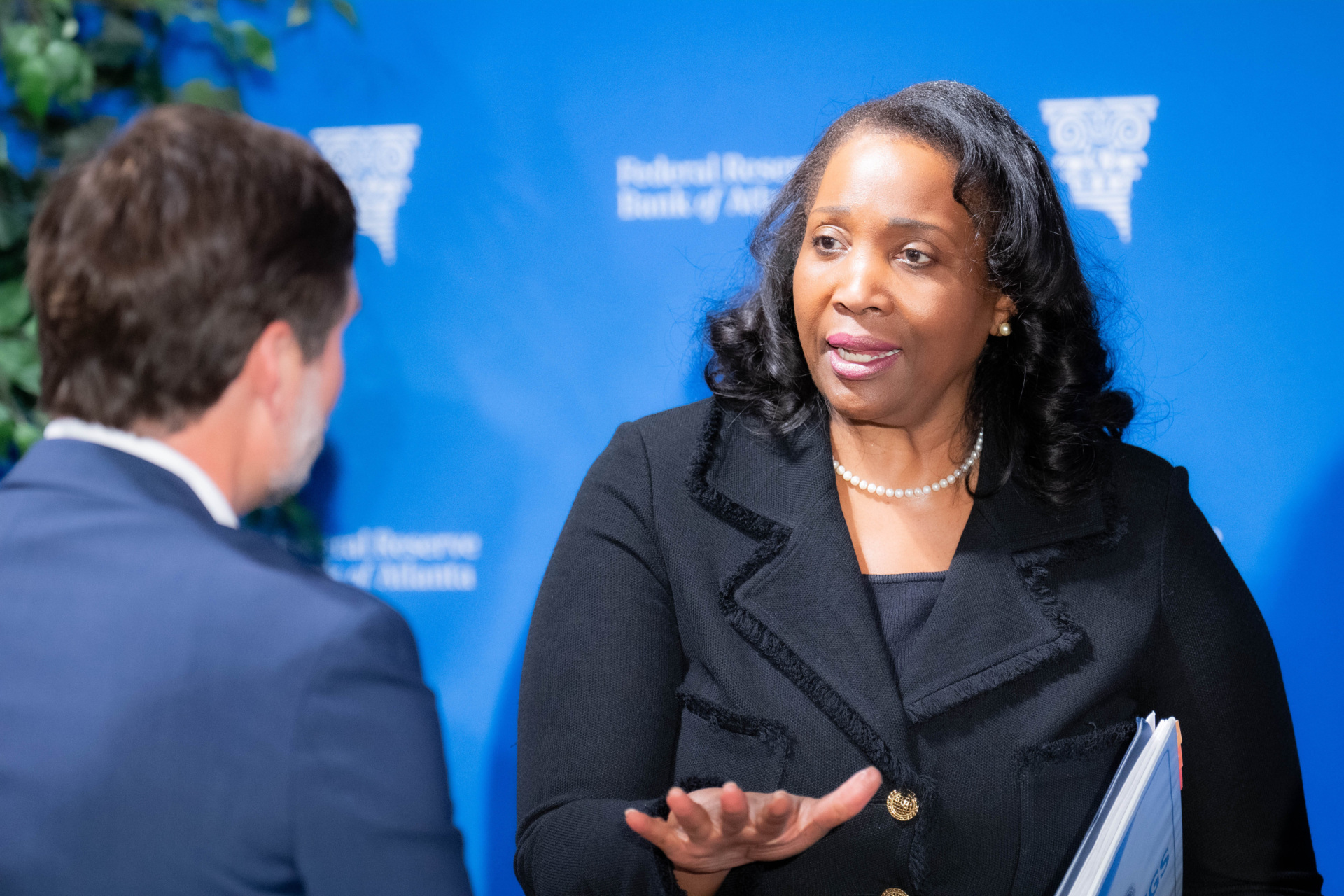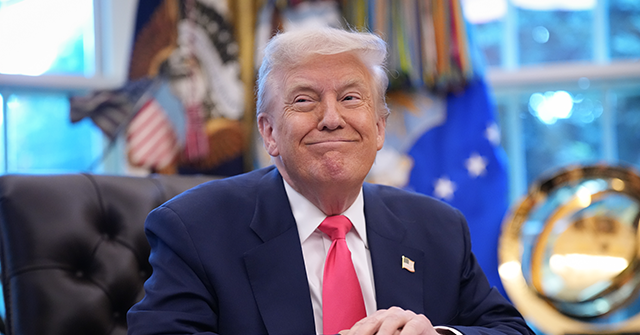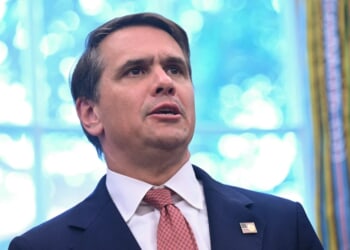The Weekly Wrap: Trump Derangement Syndrome Visits The Supreme Court
Welcome back to Friday! This week the grand poobahs of the U.S. economy gathered together in a friend-of-the-court brief to let everyone know they still really do not like what Trump is up to. The prices of goods affected by tariffs fell in August, crushing the hopes of everyone at the Cato Institute. And Americans once again made it clear that they really, really don’t like Democrat economic schemes.
Here’s this week’s pain-free roundup of the economic news—no Tylenol necessary.
A Supremely Unpersuasive Amicus Brief
Every living former Federal Reserve chair, former Treasury secretaries Robert Rubin, Larry Summers, Hank Paulson, Jack Lew and Timothy Geithner, and a bunch of prestigious economists signed on to an amicus brief written by lawyers at Covington & Burling arguing—without evidence—that “allowing the removal of Governor Lisa D. Cook while the challenge to her removal is pending would threaten that independence and erode public confidence in the Fed.”
While that sounds scary, we do not expect it to carry much weight with the court. In the first place, it is not a legal argument at all. It’s an argument for a policy to protect Fed governors from removal by the president of the United States. That’s something Congress could do by writing it into a statute. Instead, Congress wrote that a president can remove Fed governors so long as there is cause for removal. Perhaps the grandees of American economics do not like this arrangement; but if it is to be changed, that’s likely to fall to Congress and not the Supreme Court.
Even the policy argument, however, is weak. The great danger cited by the brief is that the removal of Cook would raise doubts about the independence of the central bank and that this, in turn, would unanchor inflation expectations. Those unanchored expectations would, the brief claims, then cause inflation to go higher on the theory that actual inflation is largely a matter of expected inflation.

Federal Reserve Governor Lisa Cook delivers opening remarks at a Fed Listens event hosted by the Federal Bank of Atlanta on June 4, 2025. (Federal Reserve via Flickr)
Each of those steps is implausible. The Fed’s independence is first and foremost secured by its complex structure. Monetary policy is set by the Federal Open Market Committee, consisting of Fed presidents and Fed governors. The governors serve 14-year staggered terms and must be confirmed by the U.S. Senate. The removal of a single governor for cause hardly seems likely to cause a sudden collapse of confidence.
Then there’s the idea that somehow Trump having more influence over the Fed would unanchor inflation expectations. This would be more plausible if it were Biden exerting influence over the Fed, since Biden and his allies consistently downplayed the economic costs of inflation. It’s more plausible that Fed Chair Jerome Powell remaining in office would unanchor inflation expectations since it was his insistence that inflation was transitory that contributed to the worst inflation in 40 years. Trump won re-election in part because the public believed he would do a better job on inflation, so why would the public suddenly decide he would use his influence to send it soaring again?
Finally, there’s this whole expectations theory. It’s support among mainstream economists is outmatched by evidence to support it. In fact, it has always rested on quite shaky grounds. Basically, expectations are a kind of place-holder for explaining why inflation remained low or increased when economic models would otherwise indicate the opposite. When economists couldn’t explain why inflation was behaving the way it was, they decided it must be because of expectations. Instead of assuming a can-opening, they assumed a social-psychological lever.
Actually, that wasn’t our final point about the brief. Our apologies. We thought we were, done but we have one more thing that deserves attention: even though it was widely described as a “bipartisan” group, none of the folks whose names appeared on the amicus brief are supporters of Trump, economic nationalism, or the broader vision of Make America Great Again. In fact, they’re all on record as opposing Trump. Hank Paulson, the former Goldman Sachs chief who was President George Bush’s Treasury secretary in the years leading up to the global financial crisis and one of the authors of the Wall Street bailout, endorsed Hillary Clinton in 2016. Alan Greenspan has called Trump’s tariffs “insane” and said he turns off his hearing aid when Trump talks about the economy.
In other words, they’re all anti-Trump partisans, even if some of them have in the past been associated with Republican politicians.
Tarifflation Is Not Just MIA: Tariffs Are Reducing Prices
The Department of Commerce released the latest edition of the personal consumption expenditure price index on Friday. It showed that inflation remains stubbornly above the Fed’s two percent target but not because of tariffs. For the second month in a row, the prices of durable goods—those most likely to be influenced by tariffs—fell.
Importantly, this decline is not coming from a lack of demand for durable goods. Things are not falling in price because people aren’t buying them. Real consumer spending—that is, after adjusting for inflation—on durable goods rose by 0.9 percent. People are buying more durable goods at cheaper prices.
This is absolutely devastating to the idea that tariffs are a tax on consumers. Even more devastating to that claim, however, is the evidence from a tariff tracker of prices. The tariff tracker, which is run out of the Pricing Lab at Harvard Business School, shows that since Liberation Day when tariffs were announced, the prices of imported goods in tariff-affected categories are up by less (just 1.13 percent) than domestically produced goods in unaffected categories (up by 1.25 percent). In other words, the stuff directly subject to tariffs has risen by less than the prices of stuff not even indirectly subject to tariffs. If we annualize the gains, tariffed imports are up 2.41 percent and non-tariff affected domestic goods are up 2.76 percent.
But wait. There’s more. Or less, really. The prices of domestically produced goods in categories affected by tariffs—that is, U.S. made goods competing with imports—are down 0.67 percent since Liberation Day. That works out to an annualized decline of 1.42 percent.
If this sort of thing keeps happening, we would not be surprised to see Harvard just shut down the tracker. It’s too embarrassing for the tariff-hating establishment.
Democrats Are Sliding into Oblivion on the Economy
The latest poll numbers from Reuters/Ipsos show that while the public is not exactly enthusiastic about Republican leadership on the economy, the GOP is far ahead of Democrats. Thirty-four percent of American adults say Republicans have a better plan for the economy, which is stellar. But just 24 percent say Democrats have a better plan. In a two-party system, that’s the kind of lead that wins elections.
We suspect one reason for the advantage is that no one knows what the Democrat plan for the economy might be. And that includes the leadership of the Democratic Party. They certainly have made it clear that they oppose Trump and the Republican tax cut bill, but they have not articulated a positive vision for the economy. Even more, they haven’t really articulated even their negative vision. Would they repeal Trump’s tariffs? Would they raise taxes on retirees or people with tipped income? How exactly do they plan to bring down, say, electricity or healthcare prices? The inescapable conclusion is that they either do not have a vision to articulate or know their vision would be so unpopular that they have to keep it quiet. So, publicly, it’s just fear and loathing all the way down.
Not surprisingly, the American public is not enthusiastic about this as a plan for the economy.


















